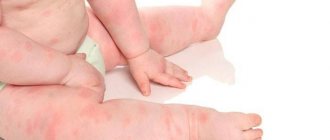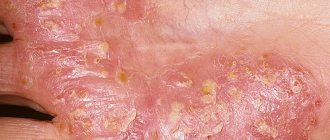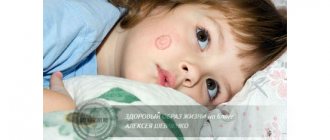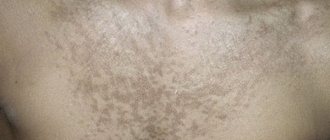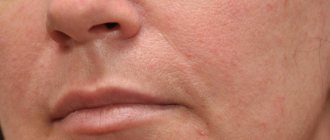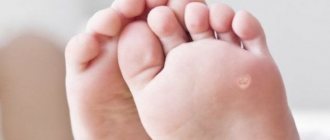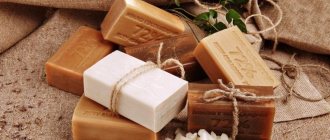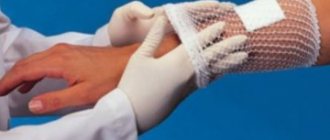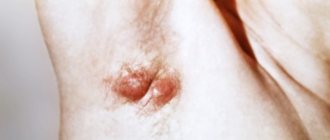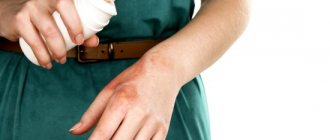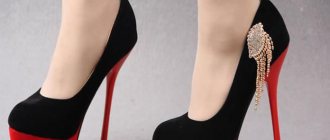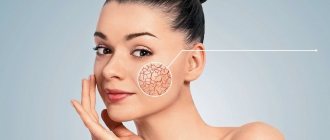Many people have encountered pink blisters on the body that resemble nettle burns. And drug treatment does not always give lasting results. Therefore, if the disease is not complicated by fever or other unpleasant symptoms, you can use folk remedies for urticaria, especially since many of them do not require material costs and are completely safe.
Before getting rid of a rash with traditional medicine recipes, it is important to know what urticaria is and what causes it. This is a skin disease accompanied by a large number of rashes on any part of the body and itching. Sometimes urticaria occurs even on mucous membranes.
Most often it is an allergic reaction to a food product, an insect bite, synthetic fabrics, medications or pollen. Also, the rash can occur against the background of chronic illnesses or helminthic infestations. In this case, before treating it, you need to get rid of the underlying disease.
Treatment at home
Treatment of urticaria at home is carried out with antihistamines. They can be purchased from a pharmacist without a prescription, but it is still advisable to consult a dermatologist or allergist before using them. In difficult cases, glucocorticosteroids are used. If the rash has a psychosomatic background, then you can use valerian tincture to relieve stress.
Local remedies include 3% hydrogen peroxide, which is applied to the affected area. To relieve burning, use salicylic alcohol or Diphenhydramine.
Folk recipes
Many of the following remedies will come in handy when you need to quickly relieve swelling or burning. For example, applying menthol or camphor lotion to the affected area can help relieve itching. And using ice helps relieve swelling at the site of inflammation. The following methods will help to calm down unpleasant sensations:
- Oatmeal bath. A glass of flakes is poured with 400 ml of boiling water, left for 20 minutes, and then poured into the bath.
- Compress made from raw potatoes. Slices of this vegetable are applied for 40 minutes.
In order to see results, the chosen procedure must be carried out every day. To relieve inflammation, additionally lubricate the area with the rash with sea buckthorn, tea tree or lemon balm oil.
If hives are caused by a food allergy, it is advisable to remove the substances that triggered it from the body. To do this, you need to cleanse your intestines. This can be done using castor oil or celandine decoction. A bunch of this medicinal plant is boiled and infused for 10 minutes, after which the infusion is taken twice a day.
The following methods are also effective:
- Tar soap is often used. It perfectly relieves irritation and inflammation on the skin. Keep the soap on the skin for 15 minutes, and after the time has elapsed, wash off with warm water. You cannot use this product if you have thin skin that is prone to dryness, or carry out such procedures more than 3 times a week, since one of the properties of tar is the ability to dry out the skin.
- Horseradish juice is mixed with honey in a 1:1 ratio and taken a teaspoon three times a day.
Celery
If you have urticaria, treatment with traditional methods can be very diverse. Celery helps well with this. It has many beneficial properties, has a rich chemical composition and generally produces a beneficial effect on the human body. Celery relieves pain well and promotes urine excretion. However, in traditional medicine it is not the leaves of the plant, which are widely used in cooking in various countries of the world, that are used, but its root.
Here are some very simple but effective recipes that help with urticaria:
- Squeeze the juice from the root vegetable and drink 2 teaspoons about half an hour before each meal. In addition, it can be used to treat blisters.
- Finely chop the root and pour a glass of cold boiled water over it, then let it brew for two hours. Take the medicine 65 ml three times a day before meals.
These recipes will be especially good if you have allergic urticaria. Treatment with folk remedies, namely celery root juice, will quickly get rid of clinical manifestations of any intensity, as well as skin lesions. Moreover, any side effects are completely excluded, since this plant has only a positive effect on the human body.
Treatment recommendations
Sometimes the appearance of hives can be associated with a person's mental problems or emotional stress. In this case, any activities aimed at achieving emotional calm will be useful. You can use auto-training with positive attitudes. If the disease is advanced, you should consult a doctor about the use of sedatives.
In addition, it is important to adhere to the following tips on how to carry out treatment at home:
- drink as much mineral water as possible (preferably Borjomi);
- avoid hypothermia or overheating;
- use any medications (even laxatives or painkillers) only as prescribed by a doctor;
- do not wear uncomfortable and tight things;
- do not sunbathe in direct sunlight without special lotion;
- It is recommended to give preference to mild baby soaps and shampoos;
- Do not use scrubs and hard washcloths for hives.
If you suspect an allergic nature of the disease, you must follow a diet that excludes possible allergens. They can be: fish, citrus fruits, strawberries, tomatoes, nuts, eggplants, milk, eggs, peanuts, soy, products containing cocoa.
In infants, allergies are often caused by infant formula.
Even if a person’s skin rashes have another cause, it is preferable to switch to easily digestible foods that exclude alcohol, fatty, spicy, smoked and very salty foods.
How does urticaria manifest?
- Hives cover the body after an allergen enters the body and appears as red spots. Usually these spots go away within a few hours; rarely the disease lasts for a day.
- In addition to spots and itching, a person feels weak, his temperature may rise, and his head hurts unbearably.
- Urticaria has acute and chronic forms of development. In acute urticaria, the rash appears only as an allergic reaction to a particular product. The chronic form is characterized by small, non-localized red dots and blisters on the neck and chest that do not go away for a long time.
- Quincke's edema is also urticaria, which has a slightly different manifestation. The reaction to exposure to an allergen is swelling of the lips, cheeks, larynx, and external genitalia. Such symptoms are very dangerous and require immediate hospitalization, because swelling can block the airway and cause suffocation.
Allergens for urticaria can be fish, peanuts, strawberries, soy, milk and other dairy products, food coloring, banana, etc. Hives can be caused by a bee, wasp or ant sting, certain medications, alcohol, fever and even menstruation. If you were once visited by hives, you must definitely analyze what caused it and avoid these irritating factors in the future.
how to get rid of allergies to household dust
How to treat acute and chronic forms of the disease
In the acute stage, a decoction of nettle will be useful. It is done like this: wash 50 g of grass, add 0.5 liters of water and cook for 3 minutes from the moment it boils. Then the nettle is infused in boiling water for an hour. Moisten a cotton pad with the resulting decoction and apply it to the area of the body affected by the rash.
To cure urticaria in the chronic stage (that is, lasting more than 1.5 months), a decoction of medicinal herbs is used. To prepare it you will need:
- chamomile;
- sage;
- series;
- St. John's wort;
- celandine;
- valerian.
Herbs are taken in the same volume and boiled for 10 minutes. Then they are allowed to brew for 30-40 minutes, and the strained mixture is added to a bath of warm water. This treatment procedure should be repeated every day for at least 15 minutes.
Methods of treating different forms of the disease
Examinations and observations from a doctor will help you find out the cause of the skin rash. And in this case, treating urticaria with folk remedies will be much more effective and will not cause harm.
Allergic
In this form, before treating urticaria with folk remedies, it is important to exclude possible allergens. To relieve inflammation and itching, areas covered with a rash are wiped with St. John's wort oil.
It is considered an effective method to ingest the root of marsh calamus, crushed to a powder state: it is consumed 0.5 teaspoon twice a day.
Cold
This form of the disease is a reaction to hypothermia and usually appears during the off-season and winter. In this case, compresses with olive oil, as well as lotions or baths made from an infusion of rosehip leaves and St. John's wort, will be useful. The medicinal solution is prepared as follows: take 5 tablespoons of herbs, pour 2 liters of boiling water and leave for 3 hours. Before use, filter the infusion.
Cholinergic in nature
This form of the disease is caused by excessive sweating, which occurs for any reason: as a result of stress, after exercise or a hot shower. You can combat rashes using the following methods:
- make lotions with soda solution at the rate of 1 tablespoon of soda per 200 ml of water (duration - up to 10 minutes);
- apply a clean cloth to the affected areas, which is moistened with a decoction of chamomile and string (also a tablespoon of each herb per 1 cup of boiling water).
Psychogenic
It is also called nervous. For psychogenic urticaria, before going to bed, it is recommended to take a mixture of tinctures of valerian and hawthorn, mixed in equal proportions (only 30 drops per day). It is useful to drink and make lotions from mint infusion. There are 2 tables for this. spoons of herbs are poured into 250 ml of boiling water and infused for an hour.
Idiopathic
This diagnosis is made if the exact cause of the rash cannot be determined. Here's how to treat urticaria at home in this case:
- 4 times a day before meals you need to drink a tablespoon of freshly squeezed celery juice;
- take baths with a decoction of 250 g of oak bark (the procedure lasts a quarter of an hour).
If urticaria is accompanied by severe swelling of the subcutaneous tissue and mucous membrane (the so-called Quincke's edema), treatment with folk remedies is unacceptable!
It is urgent to go to the emergency room, as there is a high risk of suffocation and death.
Diet for urticaria
It is impossible to effectively treat the disease if allergens continue to enter the body with food. How to identify these substances? You have to use the method of elimination: give foods separately and monitor how the immune system reacts to each of them. A diet for urticaria in children is prescribed for a period of 1 week, for adults - for 3-4 weeks.
You should not drink or eat if you have hives:
- eggs, mayonnaise;
- honey;
- chocolate;
- citruses;
- any sausages, smoked meats, canned food;
- fish, seafood;
- cheeses;
- tomatoes, radishes, beets, eggplants, pumpkin, bell peppers;
- strawberries, raspberries, blueberries, cherries, plums;
- ice cream;
- nuts;
- baked goods;
- yoghurts, soda, coffee.
- Why does my head itch?
- How to call a phone via the Internet for free from a mobile phone and computer
- Kim Protasov's diet - detailed description by week. Kim Protasov's diet menu for every day, reviews with photos
A diet for urticaria in adults and children must contain foods rich in vitamin C and proteins. You can eat lean meats and poultry. It is allowed to season dishes with sunflower or olive oil. Every day there should be vegetables on the table, boiled or stewed. What else can you eat if you have hives:
- kefir, fermented baked milk, cottage cheese, butter (little by little);
- porridge - oatmeal, buckwheat, pearl barley, semolina;
- by-products – liver, tongue, kidneys;
- cucumbers, zucchini, potatoes, peas, broccoli, spinach;
- pears, Antonovka apples;
- bananas, apricots, peaches (little by little).
Treatment prognosis
The most reliable way to get rid of hives forever is to eliminate the factor that provokes the disease. Therefore, you cannot do without examination by a doctor. Knowing how to treat urticaria with folk remedies, you can get rid of a mild form of the disease and prevent relapses. The main thing in therapy with these methods is not to harm or worsen your condition.
It is unacceptable to use ice for cold therapy, and a hot bath for illness caused by overheating. You should not use the product if you are allergic to any of its components - this can only worsen your condition. If the disease is accompanied by a headache, the rash covers new areas on the body, and also if a child is sick, then self-medication is unacceptable.
Treatment of recurrent urticaria
This recurrent disease is caused by the repeated appearance of characteristic rashes.
Treatment of urticaria in adults with folk remedies turns out to be very effective if you make half-hour compresses from raw, grated potatoes.
Important! Sometimes for successful treatment it is enough to eliminate the allergen and the disease will go away on its own. Let's say hives arose due to extreme cold or, conversely, severe overheating. Then it’s enough just to avoid these factors and the disease will no longer bother you.
There is another recipe: mix hop cones, valerian root and lemon balm in equal proportions. A large spoon of this mixture is poured with boiling water (a glass) and left for an hour. The finished strained infusion is drunk three times a day, 12 glasses daily.
